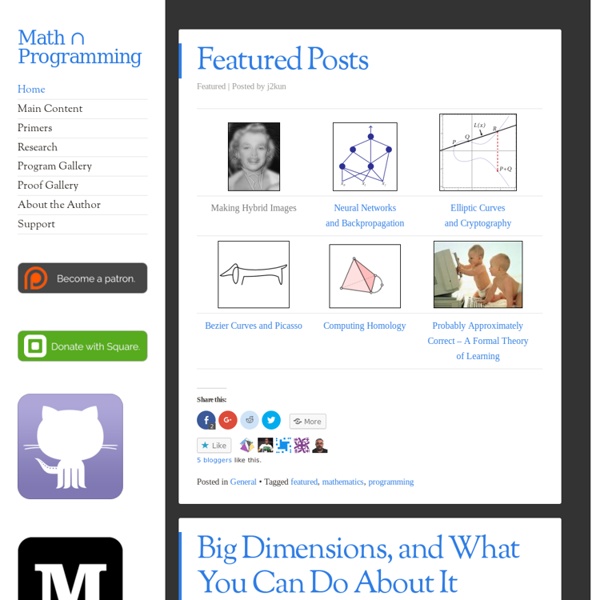



9 of the Best Free Java Books Java is a general-purpose, concurrent, class-based, object-oriented, high-level programming language and computing platform first released by Sun Microsystems in 1995. It is related in some ways to C and C++, in particular with regard to its syntax, and borrows a few ideas from other languages. Java is designed to be simple enough that many programmers can quickly become proficient in the language. This programming language is the underlying technology that powers utilities, games, business applications, and other software. The focus of this article is to select some of the finest Java books which help programmers master all aspects of this language. To cater for all tastes, we have chosen a good range of books. Next Section: 9 of the Best Free Java Books - Page 2 This article is divided into three pages: Page 1, Page 2, Page 3
I cannot understand what an Op-Amp does! : ECE Custom Sensor Solutions, Inc. - Operational Amplifiers Simplified How Operational Amplifiers Work The operational amplifier (or 'op amp') is a critical component in any apparatus for doing electrochemistry. There are many references to op amps out there, but here, we're going to concentrate only on those features that are important to electrochemical applications. This is the general schematic for an op amp. Figure 1. General symbol for an op amp. There are two input terminals (left side) and one output terminal. The output voltage is determined by the following formula: Where V- is the voltage at the inverting input, V+ is the voltage at the noninverting input, and Vo is the output voltage. Op amps are active devices and must be provided with power to operate. Op amps come in several packages. The pin connections of nearly all 8 pin DIP single op amps are standard * Pin 1 - no connection * Pin 2 - inverting input * Pin 3 - noninverting input * Pin 4 - negative power supply * Pin 5 - no connection * Pin 6 - output * Pin 7 - positive power supply
ch00ftech Industries | What if it actually works? Circuits.io blog Construct 2 the HTML5 Game Maker - Scirra.com Open-Collar | Work Smarter is America's 1st Nationwide Open-Access Public Workshop -- What Do You Want To Make at TechShop? Gadget Factory - Céu: a high-level programming language that runs on Arduino The link you provided gives a very similar example to mine and "assumes the do_something() execution time is well below the system tick period and that my_thread() is not preempted": An obvious solution is to write something like this: msg_t my_thread(void *param) { while (TRUE) { do_something(); chThdSleepMilliseconds(1000); /* Fixed interval.*/ }} This example works well assuming that the do_something() execution time is well below the system tick period and that my_thread() is not preempted by other threads that could insert long intervals.If the above conditions are not satisfied you may have do_something() executed at irregular intervals, for example: Also note that the error increases over time and this kind of behavior can lead to anomalies really hard to debug. The tick preemption time is an implementation detail and your program should not depend on it to behave correctly.He even suggests reliable alternatives to the code above. I wonder if someone can reproduce these tests.
Tangentsoft